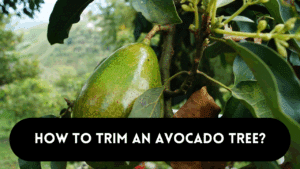Tree pruning is a crucial component of maintaining a vibrant and healthy landscape. You must know when to trim your green companions if you want them to flourish and live as long as possible. In this comprehensive guide, we’ll explore the nuances of tree trimming, shedding light on the best times of year to prune, as well as the techniques and benefits that will promote the health and wellbeing of your trees.
Understanding the Best Time to Trim Trees
Tree pruning is not just an ad hoc chore; it is a science. The best time to trim your trees will depend on the species and your specific goals. Ideally, pruning should happen during the dormant season.
This means that for most trees, it is late fall or early winter, when the tree is dormant and not stressed by emerging leaves and flowers.
The Best Time of Year to Trim
Winter is the ideal season for tree pruning. With the leaf gone, it is easier to inspect the tree’s structure and identify problematic branches.
This dormant season may help the tree recover more quickly and efficiently, which lessens stress. Think of it as your trees’ well-earned spa day, an opportunity for them to unwind from the arduous responsibilities associated with growing every day.
Careful Trimming for Blooming Beauty
The sap starts to flow as the days get longer and the temperature rises, indicating the arrival of spring. While winter is often the best time to prune trees, several species benefit from some spring trimming.
This is especially true for trees that bloom, since post-bloom pruning may enhance form and promote abundant flower production the following year.
Taking Care of Emerging Issues
With all the vibrant greenery in the summertime, using pruning shears could seem odd. However, this is the moment to address urgent matters.
Remove diseased or broken branches as soon as you can to prevent issues from getting worse. In addition, summer pruning helps avoid diseases that thrive in warm, muggy conditions and improve air circulation in fruit-bearing trees.
Winter Readying Yourself for Less Heat and Fall
When the leaves start to fall, pruning becomes more strategic. Pruning aids in concentrating energy on the most crucial areas of the tree as it prepares for winter.
Aim for equilibrium in the canopy and focus on clearing deadwood. Think of it as a classy way to close the growing season and set yourself up for a strong comeback in the spring.
Adapting Trimming Methods to Different Tree Types
A thorough awareness of the particular requirements each of your trees is essential for efficient pruning. For instance, some techniques are more effective on deciduous trees than on evergreens. Let’s now investigate the tailored approaches for various tree species.
Accepting the Sleeping Dance
The seasonal dropping of leaves by deciduous trees synchronizes their movements with the dormant season. Winter is unquestionably the finest season to trim deciduous trees since the branches are visible through their lack of leaves. Now is the time to prune any dead or crossed branches so that the tree has a sturdy, open structure.
Evergreen Style
With their evergreen leaves, evergreen trees have a somewhat different rhythm. Although winter is still a good time to perform care, evergreens can withstand modest pruning all year round. But do not make large pruning in late summer, since the new growth might not have enough time to harden off before the winter cold sets in.
Trimming Techniques
Pruning is an art form, not something that can be done just any old way. Gaining control over the symphony of cuts is necessary to support the structure and good growth of trees. Let’s examine the essential pruning methods that will transform your tree into a magnificent work of botany.
1. Crown Thinning: Canopy Opening
It’s like giving your tree a breath of fresh air when you think of its crown. You can improve air circulation and light penetration in the canopy by carefully pruning branches at different points. This lowers the chance of illness and encourages the development of robust, evenly spaced branches.
2. Destocking: Cleaning Out the Past
A healthy tree has no room for deadwood. Deadwooding is the process of removing withered or dead branches to keep them from becoming possible hazards. This method protects your property from falling branches during storms in addition to making the tree seem better.
3. Reversing Course: Regulating Expansion
Going back is a useful strategy for controlling the size of your tree. You can regulate the tree’s overall height and promote denser side shoot growth by pruning back the tips of the branches. This is especially helpful for decorative trees and hedges where proper shape is essential.
4. Directional Reduction: Molding the Prospects
The main goal of directional pruning is to modify the tree’s growth pattern. By carefully pruning off branches, you may mold the tree’s shape and focus its energy in particular directions. To create forms that are both visually beautiful and well-balanced, this technique is necessary.
The Reasons Tree Pruning Is Important
Pruning is an essential activity for the general health of your trees, not only a decorative one. Let’s explore the numerous advantages that are beyond aesthetic appeal.
1. Illness Prevention: A Fit Barrier
Frequent pruning provides protection from illnesses. You can protect the entire tree by cutting off unhealthy or infested branches as soon as possible to stop the spread of infections. It’s an early action that will eventually pay off.
2. Structural Integrity: A Robust Core
A tree that has been well-pruned is strong. You build a robust structural framework by removing branches that are weak, congested, or crossover. This increases the tree’s resistance to storm damage and increases its longevity.
3. More Sunlight: Nourishing Development
The lifeblood of trees is sunlight. When the canopy is properly pruned, light can reach lower branches and the surrounding vegetation. This feeds the ecology as a whole, encouraging luxuriant undergrowth and a colorful scenery.
4. Better Air Circulation: Easy Breathing
Like all living things, trees require oxygen to survive. By increasing air circulation, crown thinning lowers the chance of fungal infections. It’s like giving your tree cool air to maintain its respiratory health.
5. Productive Benefits: Abundant Harvests
Pruning fruit-bearing trees can lead to abundant harvests for people who own them. You may maximize fruit yield, improve fruit quality, and keep branches from breaking under the weight of a heavy crop by carefully pruning branches.
A Guide to Trimming Choosing to DIY or Hire an Arborist
With your newfound understanding of the best time to trim trees and the necessary methods, the question of whether or not to DIY now becomes apparent. While motivated homeowners can handle small-scale pruning chores, in some cases professional arborist assistance is required.
When to Do It Yourself:
Small-scale trimming Regular maintenance is easily accomplished by a do-it-yourself enthusiast, such as pruning small branches or deadwood.
Young Trees: Trees that are still manageable in size are good candidates for amateur trimming, which encourages strong development right away.
First things first: Doing it yourself (DIY) is a good alternative if the activity requires low-risk pruning and you can safely reach the branches from the ground.
When to Give an Arborist a Call
Big Trees: Consulting with a certified arborist is advisable for large trees or trees with serious structural problems.
Specialized Tools: Leave the work to the experts if it entails climbing or calls for specialized equipment.
Disease or Pest Issues: An arborist is qualified to identify and treat broad diseases and pest infestations with precision.
FAQs
When is the ideal time to prune trees?
The dormant season, which usually occurs in late autumn or early winter, is the best time to prune trees. But some species benefit from targeted chores in other seasons, or from minor trimming in the spring.
Is it okay to prune my trees in the summer?
Summer isn’t the best time to prune, but it works well for taking care of urgent issues like cutting off broken branches. Summer pruning of fruit-bearing trees can improve air circulation.
How frequently should my trees be trimmed?
A tree’s age, species, and general health are among the variables that determine how often it has to be trimmed. For young trees, normal maintenance should be performed every two to three years, while for mature trees, annual trimming is advised.
Should I employ a professional or can I prune my trees myself?
Small jobs like clearing away deadwood or tiny branches are doable by yourself. However, it’s advisable to seek the advice of a qualified arborist for huge trees, specific equipment, or diseased trees.
Apart from cosmetic benefits, what are the advantages of tree trimming?
Tree pruning has benefits beyond appearances; it helps prevent disease, strengthens the structure, lets more light in, improves airflow, and maximizes fruit yield on fruit-bearing trees.
Conclusion
Trees are silent contributors to the beauty of our surroundings, standing like towering giants in the vast fabric of nature. Our method of taking care of these silent friends is to become experts at pruning and to know when it’s best time to trim trees.
Remember that every cut you make when trimming trees is an act of kindness that shapes the tree, the surrounding area, and the ecology it sustains. So grab your pruning shears, accept the changing of the seasons, and start the growth and rejuvenation dance.




